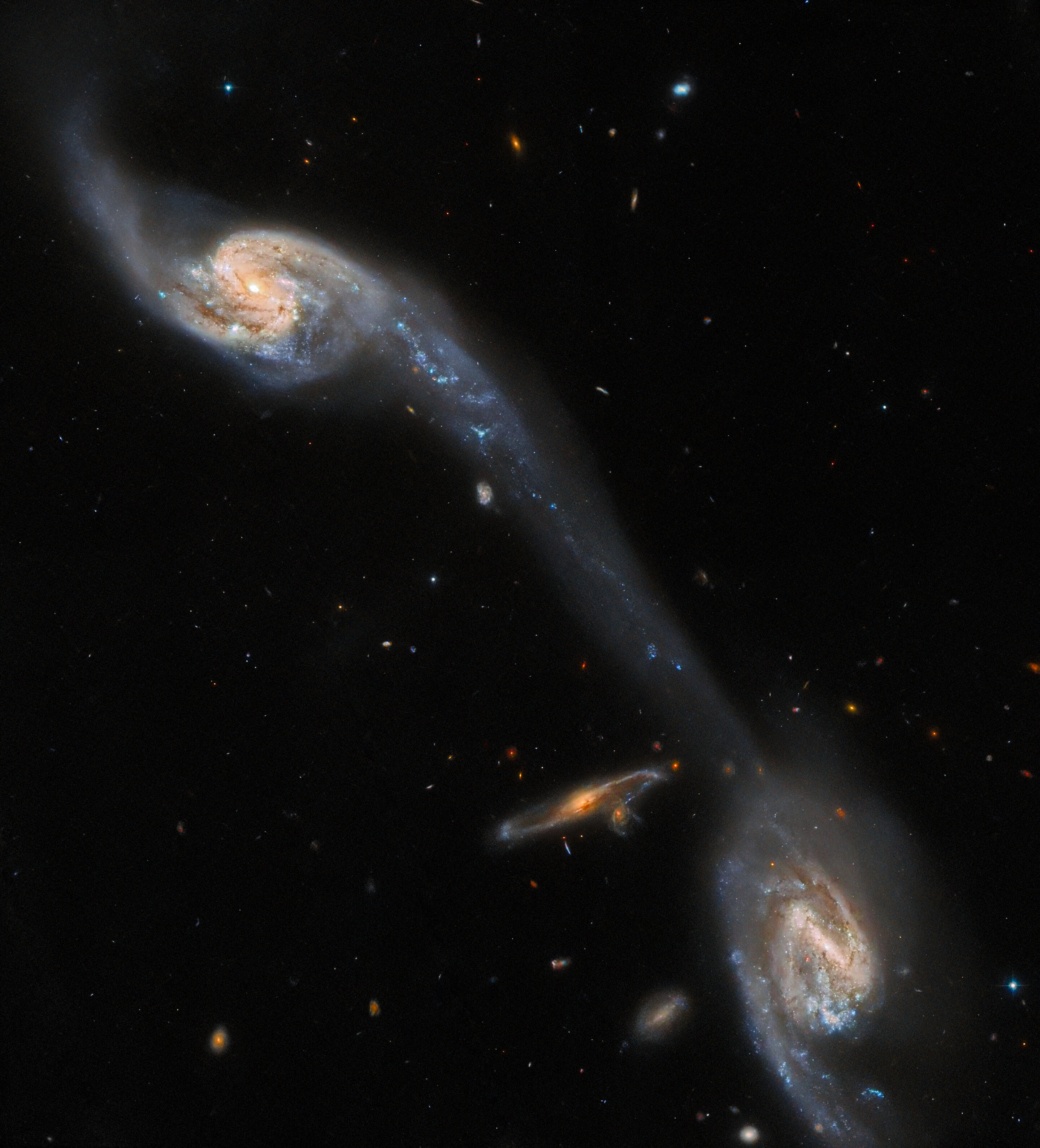This Hubble Space Telescope view shows two galaxies in the galactic triplet Arp 248, commonly known as Wild's Triplet, which is located roughly 200 million light-years from Earth in the constellation Virgo. In this view, two huge spiral galaxies flank a smaller, unrelated background spiral galaxy that looks to be joined by a bright bridge. A tidal tail is an extended stream of stars and interstellar material created by the mutual gravitational pull of the two foreground galaxies.
This finding comes from research that dives into two collections of strange and amazing galaxies: A Catalogue of Southern Peculiar Galaxies and Associations, created by astronomers Halton Arp and Barry Madore, and the Atlas of Peculiar Galaxies, also compiled by Halton Arp. Each collection comprises a zoo of incredibly strange galaxies, such as Arp 248, as well as one- or three-armed spiral galaxies, galaxies with shell-like formations, and a slew of other space curiosities.
Hubble's Advanced Camera for Surveys combed through this collection of unusual galaxies for promising candidates for future observations with the NASA/ESA/CSA James Webb Space Telescope, the Atacama Large Millimeter/submillimeter Array, and Hubble itself. With so many celestial objects to investigate in the night sky, efforts like this that guide future observations are a wise use of observing time.




0 Comments